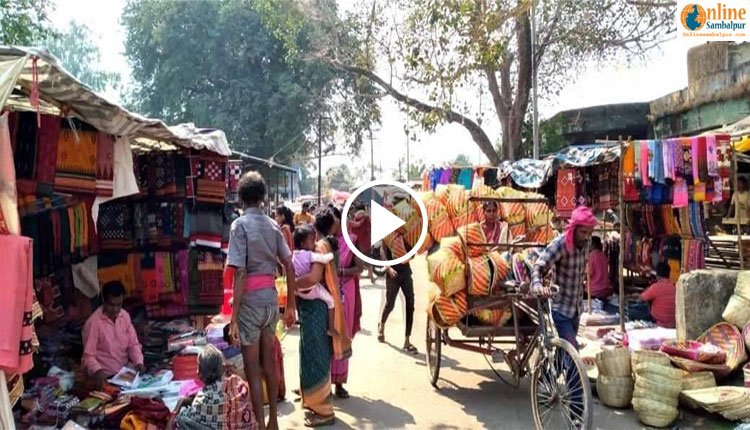Sambalpur: Kamali Bazar Losing Its Glory, Sambalpur’s Historic Market at Risk

Sambalpur: The Kamali Bazar weekly market, formerly a lively hub of activity near Balibandha in Sambalpur city, is on its way to extinction. The Samlei project has reduced the market’s sidewalk, a dramatic contrast to its past prominence. Over the past two years, uncertainty has plagued the market, leading to a decline in both traders and customers.
Local elders recall the market’s rich history, which dates back to English rule. Alexandra Bulstrode Cumberlege began serving as Senior Deputy Commissioner of Sambalpur in January 1864. Due to problems pronouncing his name, locals affectionately referred to him as Kamli Saheb. Before the foundation of this market, Sambalpur did not have a fixed marketplace. People used to sell products while walking about. Kamli Saheb established a market near the Rajbati for the benefit of the community, which became known as Kamli Bazar.
During its peak, this market served the needs of both lower and middle-class families. It offered a wide range of items, from stones essential for weddings to clothing, clay tools for altar decoration, and pottery. The market became well-known for its saree shops, where one could get affordable products for both domestic and marriage needs. Visitors from various parts of the district frequented the market, attracted not only by its diverse offerings but also by the availability of fresh village produce.
However, the Samlei project also demolished the Rajiv Gandhi Market Complex, which was built to assist Kamali Bazaar. Demolition began, leaving businesses, stalls, and seating areas in ruins. Despite assurances from the administration regarding alternative arrangements, the market remains in a state of limbo, with no meaningful progress achieved.
The fear of extinction looms large over this once-vibrant market, sparking demands from the community for immediate action to restore its former glory. The preservation of Kamali Bazar serves as a tribute to Sambalpur’s cultural history, with stakeholders urging the state to take decisive action to secure its future survival.





